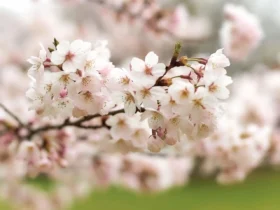In the realm of floral wonders, the Tiger Flower, scientifically known as Tigridia pavonia, stands out as a striking and unique bloom that captures the essence of vibrant colors and intricate patterns. With its captivating appearance resembling the majestic stripes of a tiger, the Tiger Flower has charmed gardeners and flower enthusiasts alike. In this article, we delve into the captivating world of the Tiger Flower, exploring its appearance, characteristics, cultural significance, and the joy it brings to gardens and floral arrangements.
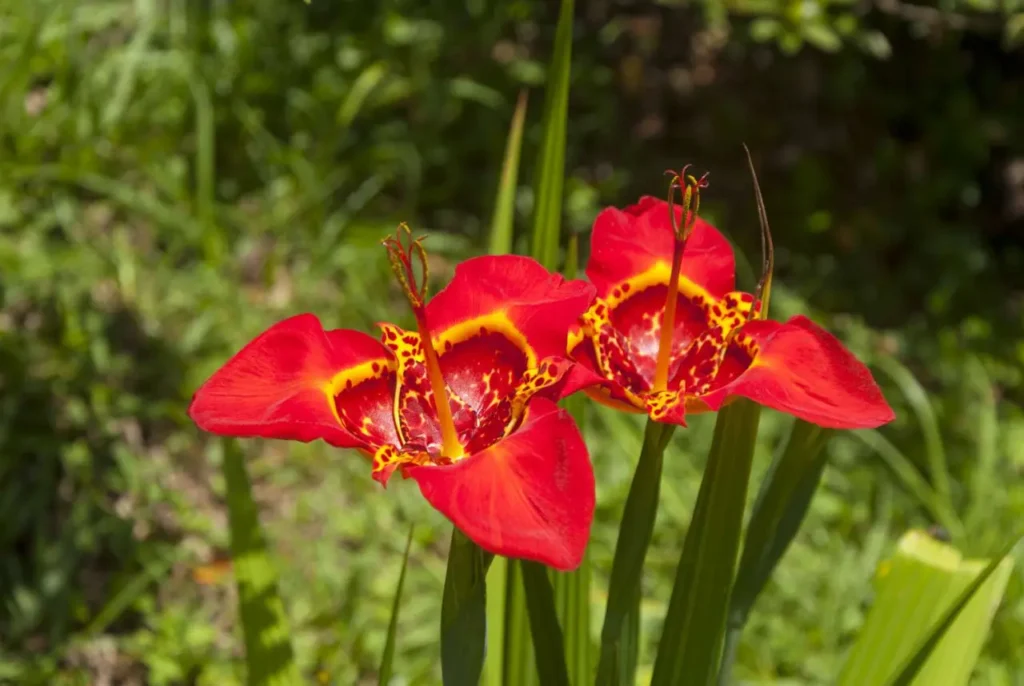
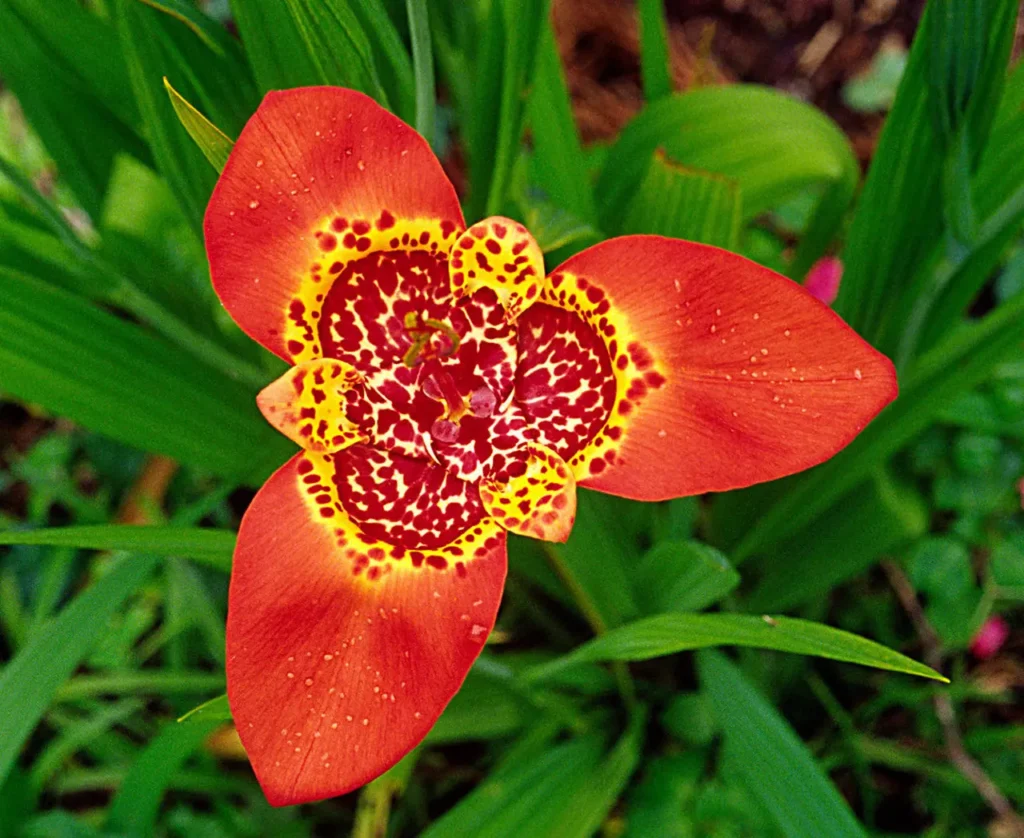
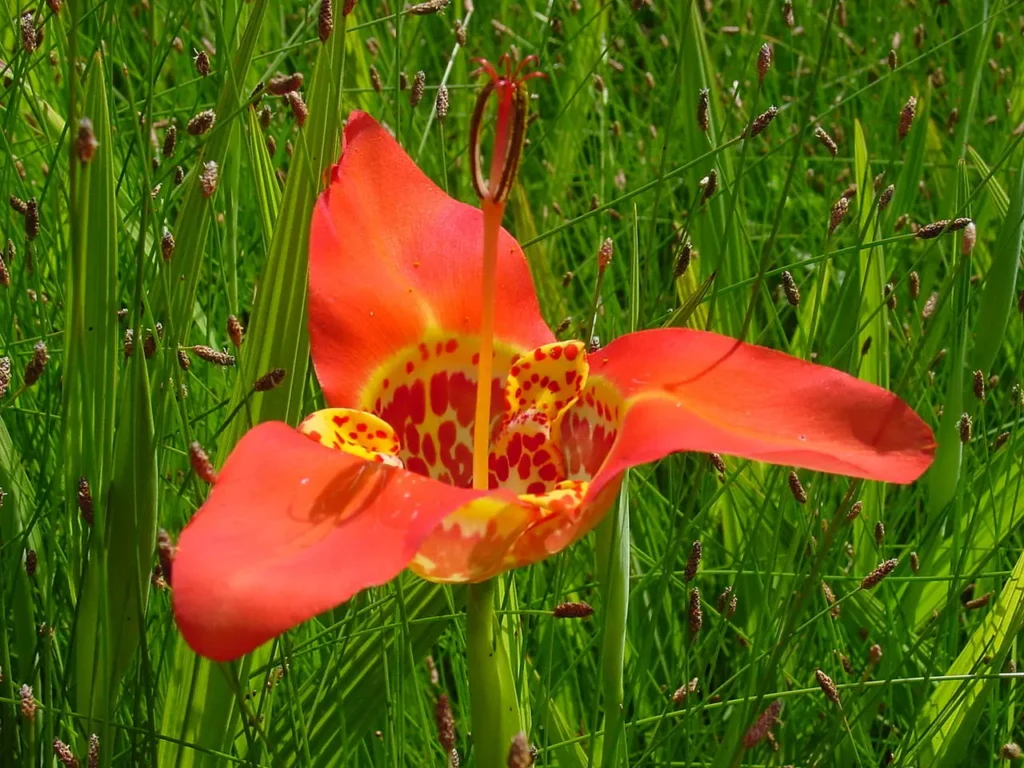
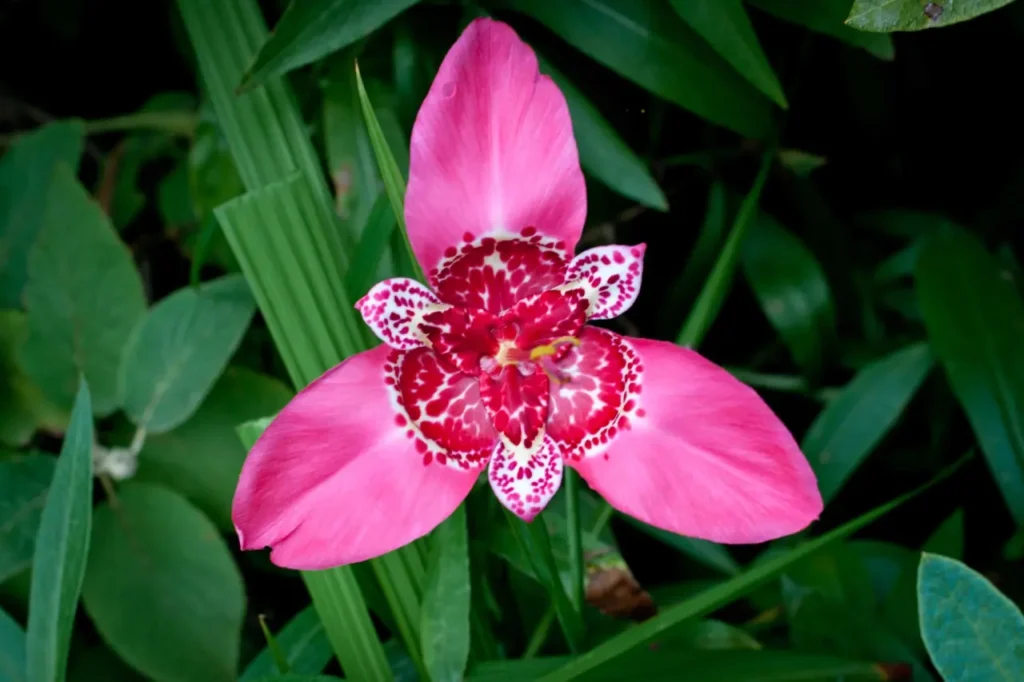
Appearance and Characteristics
The Tiger Flower, native to Mexico and Central America, is a member of the iris family (Iridaceae). What sets this flower apart is its stunning and intricate pattern, which evokes the distinctive stripes of a tiger’s coat. Each bloom features three large petals that display a captivating array of colors, including shades of red, orange, yellow, and sometimes even white. These petals are often adorned with contrasting spots and markings that further enhance the resemblance to a tiger’s markings.
The flowers of the Tiger Flower are relatively short-lived, typically blooming for just one day. However, the plant produces multiple blooms over the course of its flowering period, which extends over several weeks.
The color of the Tiger Flowers
The Tiger Flower, also known as Tigridia pavonia or Mexican Shell Flower, is a captivating and colorful flowering plant. The flowers of the Tiger Flower are renowned for their vibrant and eye-catching colors, often resembling the intricate patterns of a tiger. The common colors of Tigridia pavonia flowers include:
- Orange: The most common color is a bright and bold orange, reminiscent of a tiger’s fiery coat.
- Red: Some varieties feature deep and rich red hues, adding a touch of intensity to the blooms.
- Yellow: Bright yellow flowers are also common, adding a sunny and cheerful vibe to gardens.
- White: While less common, there are Tigridia pavonia flowers that come in pure white.
- Bi-color: Many Tiger Flower varieties are bi-colored, with combinations like orange and red or yellow and red.
The distinctive appearance of the Tiger Flower, with its unique color combinations and spotted or speckled petals, makes it a popular choice for adding a splash of exotic beauty to gardens and landscapes. The exact color of the Tigridia pavonia flowers you encounter may vary based on the specific variety you’re growing.
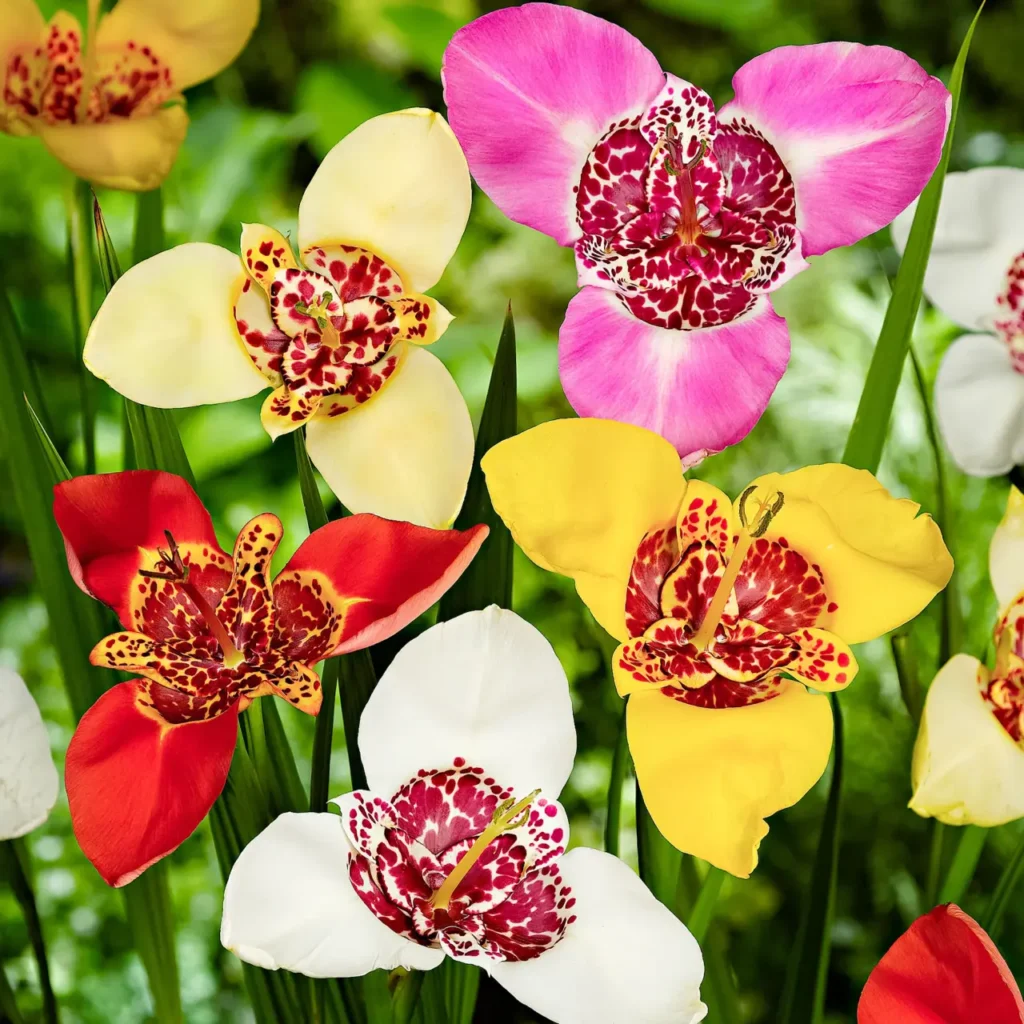
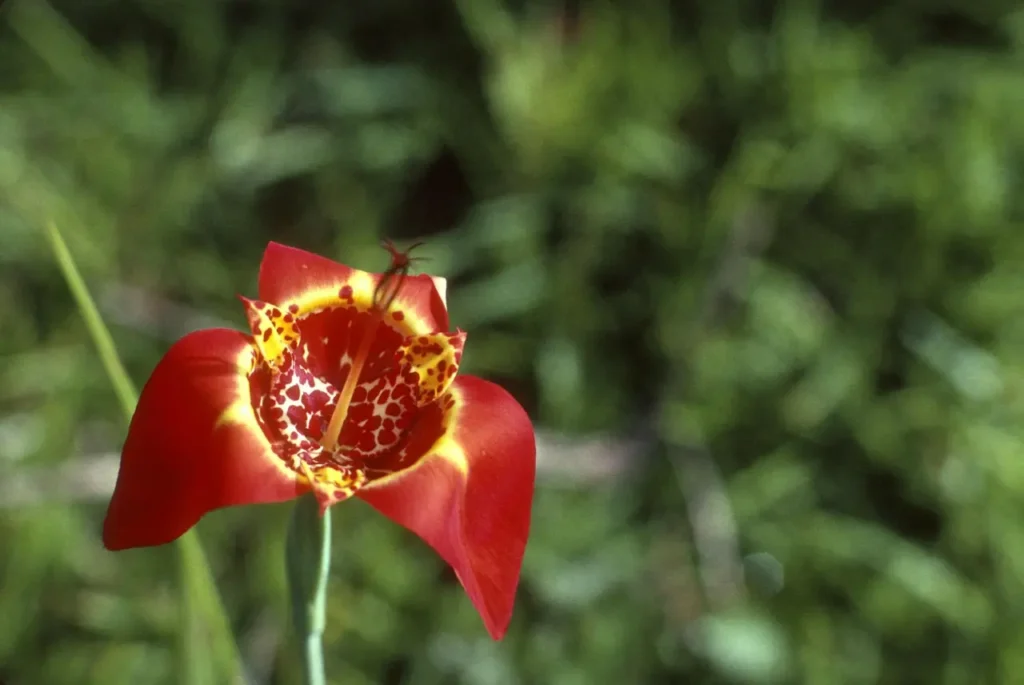
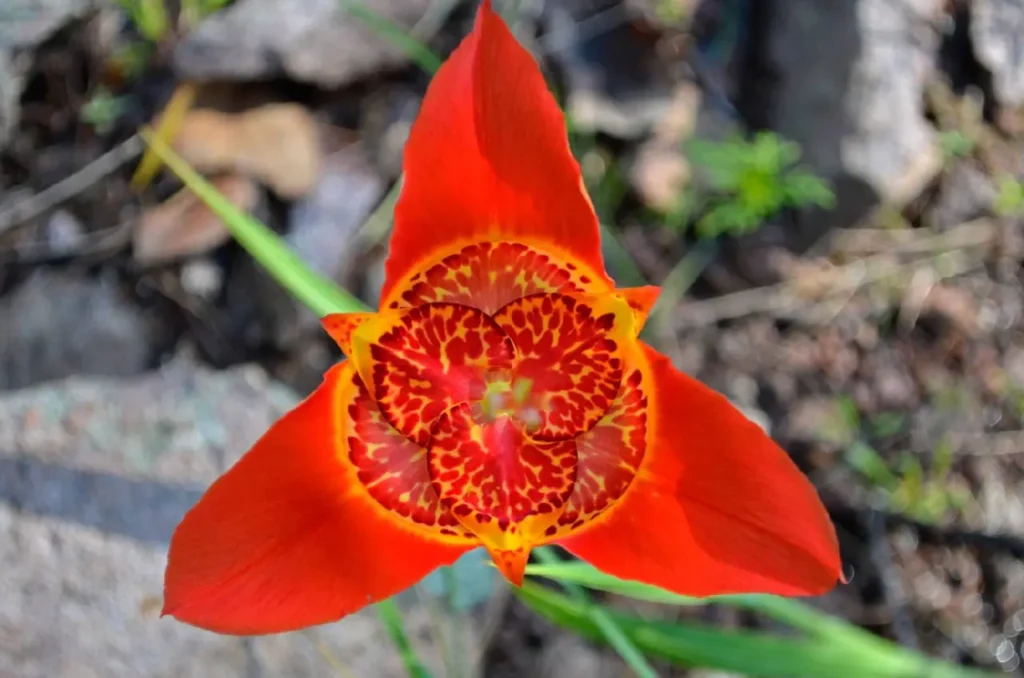
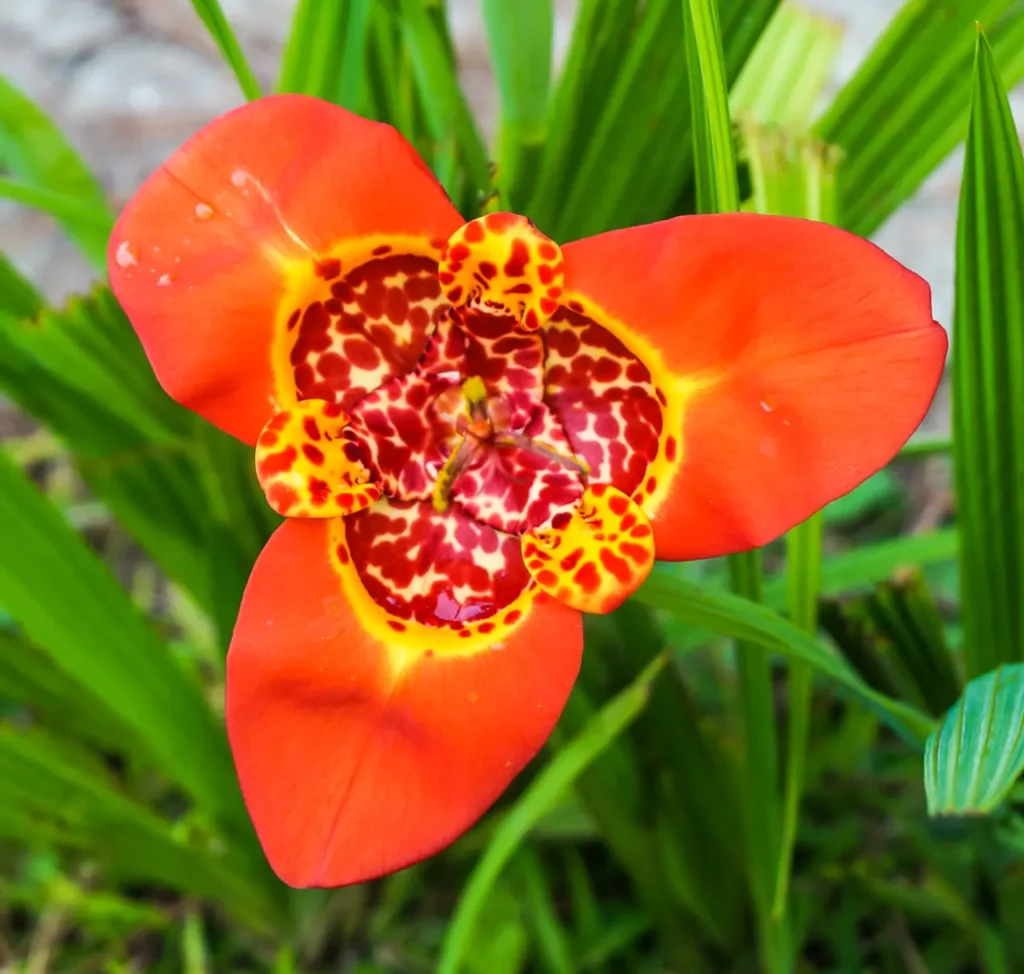
Cultural Significance and Symbolism
The Tiger Flower holds cultural significance in the regions where it is native. In Mexico, for example, it is sometimes referred to as the “jaguar flower” due to its resemblance to the markings of a jaguar, another iconic big cat. In Mexican culture, the flower has been associated with beauty, strength, and the majestic qualities of the big cats it resembles.
In some spiritual and symbolic contexts, the Tiger Flower represents transformation and change. The fleeting nature of its blooms, which open and close within a single day, serves as a reminder of the impermanence of life and the importance of appreciating moments of beauty.
Gardening and Cultivation
Tiger Flowers are well-suited for gardens and landscapes, particularly in climates where they can thrive. Here are some key considerations for cultivating these captivating blooms:
- Planting: Choose a location with well-draining soil and ample sunlight. Plant the bulbs in the spring for summer blooms.
- Spacing: Space the bulbs about 4 to 6 inches apart, allowing room for growth and multiple blooms.
- Watering: Keep the soil consistently moist but not waterlogged. Avoid excessive watering during the dormant season.
- Mulching: Applying a layer of mulch around the plants can help conserve moisture and regulate soil temperature.
- Overwintering: In colder climates, you may need to dig up the bulbs before the first frost and store them in a cool, dry place for the winter.
Floral Arrangements and Beauty
The unique and captivating appearance of Tiger Flowers makes them a wonderful addition to floral arrangements and bouquets. Their vibrant colors and intricate markings create a stunning focal point, adding a touch of the exotic to any arrangement.
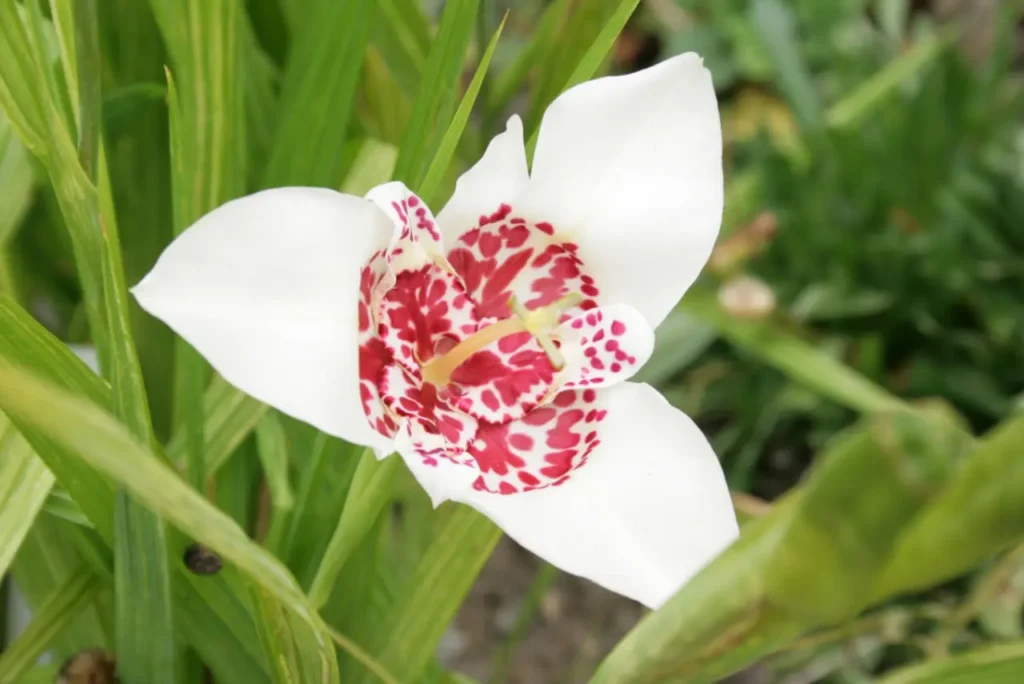


The Tiger Flower, with its striking appearance and cultural symbolism, invites us to marvel at the intricate beauty of the natural world. Its resemblance to the majestic markings of big cats and its short-lived but vibrant blooms remind us of the fleeting nature of life’s moments of beauty. By cultivating and admiring the Tiger Flower, we connect with the rich tapestry of nature’s diversity and the allure of the wild, making it a cherished addition to gardens and floral displays that celebrate the allure of the natural world.
